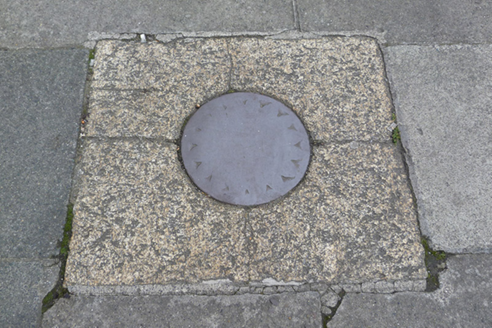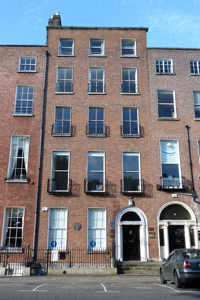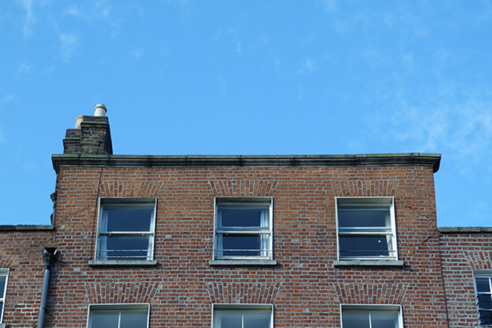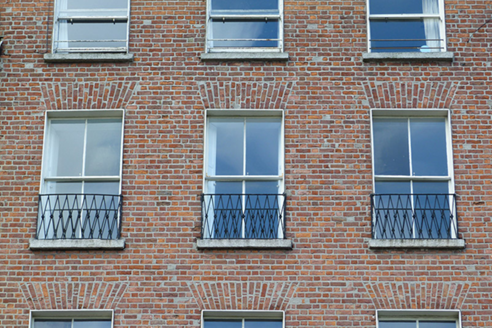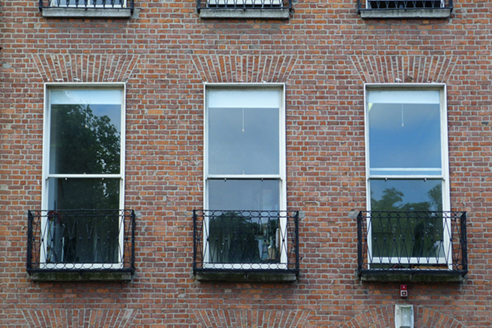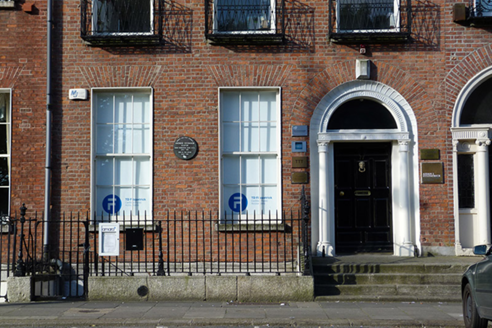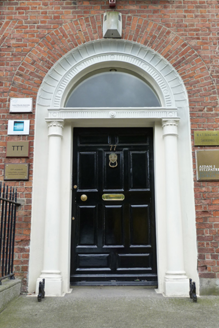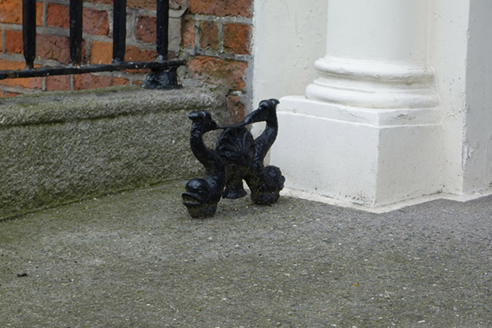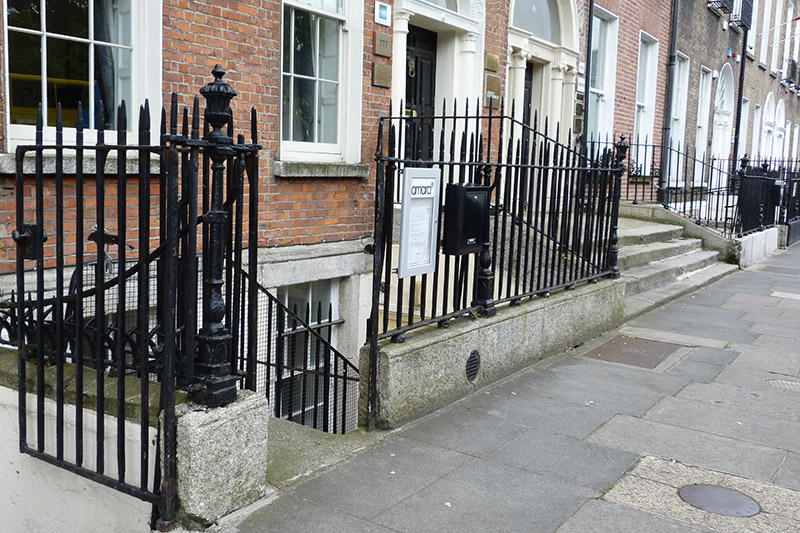Survey Data
Reg No
50100411
Rating
Regional
Categories of Special Interest
Architectural, Artistic, Historical
Original Use
House
Historical Use
Apartment/flat (converted)
In Use As
Office
Date
1785 - 1840
Coordinates
316565, 233499
Date Recorded
05/07/2016
Date Updated
--/--/--
Description
Attached two-bay five-storey former house over basement, built c. 1790 and remodelled in nineteenth century, two-storey return to rear. Although adapted as flats in 1931, now in use as offices. M-plan slate pitched roof, hipped to west ends, behind carved granite parapet with granite coping; parapet to rear recently rebuilt and having granite coping. Brick chimneystacks to east with clay pots. Mainly cast-iron rainwater goods to rear elevation. Flemish bond brown brick walling on granite plinth course over painted rendered walls to basement. Square-headed window openings, diminishing in height to upper floors, with raised rendered reveals and painted granite sills; carved granite block-and-start surrounds and wrought-iron grilles to basement. Timber sliding sash windows, front elevation having six-over-six pane windows to basement and ground floors, one-over-one pane to first and top floors and two-over-two pane to second and third floors; rear elevation has three-over-three pane and one-over-one pane to top floor, six-over-six pane to third floor and two-over-two horizontal-pane to lower floors. Decorative wrought-iron balconettes to first to third floors of front elevation and to ground and first floors of rear elevation. Round-headed principal doorway with rendered linings, fluted frieze and cornice, engaged Doric columns with acanthus capitals, plain fanlight in coved surround and nine-panel timber door with brass furniture. Granite platform with cast-iron boot-scrapes and four granite steps. Wrought-iron railings enclosing basement area with decorative cast-iron posts on carved granite plinth. Cast-iron coal-hole covers set in granite flags to pavement. Recent red brick public house occupying site of former mews house to rear on Fitzwilliam Lane. carparking to rear.
Appraisal
No. 77 Merrion Square is distinguished from other buildings in the row by its taller five-storey form, probably the result a nineteenth century remodelling. The restrained façade is enlivened by decorative cast-iron balconettes and by transitional features, such as its Doric doorcase with acanthus capitals and coved surrounds. The intact railings and other setting details contribute to the intact appearance of the square. Andrew O'Connor (1874-1941), a noted American-Irish sculptor, died in this house on June 7th 1941. Square was built as part of the original development of the eighteenth-century square by the Fitzwilliam Estate. The square is one of the best-preserved Georgian streetscapes in Ireland. The north, east and south sides are lined with terraced houses of eighteenth and early nineteenth-century date, while the west side is terminated by the garden front of Leinster House . The houses maintain a relatively uniform building height and design, attributed to standards promoted in Fitzwilliam's leases. Individuality was introduced through the design of doorcases, window ironwork and interior decorative schemes. The south side the square was initially set in large plots to twelve leases; plots were leased consecutively from east to west up until the row was completed in 1791.
